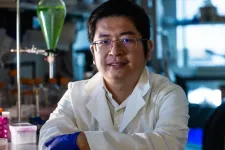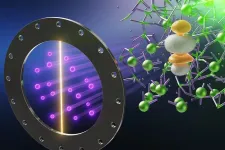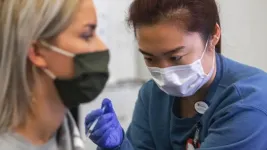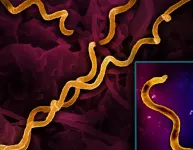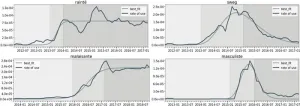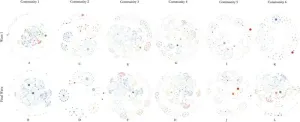LAWRENCE — A fascinating new book chronicling transformation on the plains of Kansas and western Colorado uses repeat photography — contemporary re-creations of 1870s photos — to reveal startling changes to the landscape.
Its author isn’t just a photographer and veteran of years of “Kansas-ing” — his term for searching off-the-beaten-path curiosities across the Sunflower State — but also a University Distinguished Professor of Ecology & Evolutionary Biology at the University of Kansas and senior curator of ornithology at KU’s Biodiversity Institute and Natural History Museum.
While Town Peterson usually focuses his research on the geography of biodiversity, tropical ornithology and systematics, distributional ecology and disease-transmission risk mapping, his new book, “One Hundred and Fifty Years of Change on the Great Plains,” is a bit different.
“I've gotten interested in what you could call ‘historical ecology,’ essentially going deeper in time than what we can sample and study now,” Peterson said. “This historical photograph series from 1873 has become really interesting. First, it’s unique because the photographer was hired to travel the length of the Kansas Pacific railroad and take photos, apparently for promotional purposes. At nearly every major stop along the railroad, Robert Benecke took photographs. By nothing short of a miracle, most or all of these photos survived and ended up in the collections of Southern Methodist University.”
Other repeat-photography projects have re-created the work of 19th century photographers in the region, but none with the landscape locations as precisely described as Benecke’s.
“There's also an older collection from a man named Alexander Gardner, who also traveled the length of the Kansas Pacific railroad, but when it was being surveyed around 1867-69,” Peterson said. “Benecke took his photos in 1873, when the railroad was mostly in place and functioning. The Gardner photographs have been part of a repeat-photography effort about 20 years ago, which was fascinating. But Benecke’s material had never been touched, even though Benecke’s photo locations were better described. Gardner would say things like ‘334 miles west of St. Louis,’ while Benecke would reference specific towns like Brookville or Russell.”
During travel restrictions put in place during the COVID-19 pandemic, Peterson found himself unable to conduct his usual international research and education. So he decided to focus on a Kansas-based project and started working with Benecke’s material, distilling it down to landscape photographs that he could find and photograph today.
“It came to around 50 landscape views,” he said. “Over the last couple of years, I traveled back and forth between Kansas City and Denver a few times. Some were painfully hard to relocate, and others, even when you knew where they were, were painfully hard to photograph… brambles, ticks, trees, etc.”
Even when Peterson was able to pinpoint sites of Benecke’s photos, sometimes changes to the landscape made exact re-creation through the camera viewfinder impossible. Indeed, the KU scientist had to make very difficult choices in how to best re-create Benecke’s original images.
“There were some tough decisions involved,” Peterson said. “Do I take a picture of an ugly cement drainage culvert, or do I move a half-mile down the river and photograph the mouth of the same river where it now empties into the Kansas River? Do I take a picture of a dense forest that wasn’t there in the 19th century, or do I use a drone to get a shot of the broader landscape — something closer to what the original photographer might have taken?”
The changes over a century and a half, revealed by comparing Benecke’s and Peterson’s images side by side, are striking. Peterson said that, as an evolutionary biologist, the starkest difference was the presence of so many trees today in places that had none 150 years ago.
“We live in the Great Plains, yet if you look out pretty much any window here in Lawrence, it doesn't look like plains — it looks like a forest,” he said. “I've been here for 30 years, and it has always pretty much looked like this. So, I got interested in how long-term that view is. I've come to appreciate how our Great Plains is very different from the Great Plains that was settled 150 years ago by Europeans, much less farther back still. You get west of Manhattan, and there’s pretty much not a single tree in any of Benecke’s photographs. Now, there are trees all the way to Denver, at least in the towns and cities.”
Peterson said this “afforestation” — the opposite of deforestation — is a pervasive force across the Great Plains. Indeed, the KU researcher is carrying out studies to explore the phenomenon more.
“That, to me, was the biggest lesson on the science side,” he said. “I’m involved in studies where we’re exploring how much the biodiversity has changed at sites along this route. We’re seeing how dozens of species have taken advantage of the now-forested landscape to expand their ranges westward into the Great Plains.”
Some hallmarks of the 19th century American West are notably absent from Benecke’s photos, such as American bison or signs of Native American life and culture. Peterson thinks these omissions spring from the promotional purposes of the Benecke photos, which were in part intended to sell railroad-owned land at a massive profit.
“It was all about getting settlers of European descent from the East to come out and settle on this landscape,” he said. “If they could sell the land deeded to the railroad by the U.S. government, it was pure profit. Life in western Kansas wasn’t at all easy, but the settlers didn’t need to know that until they had already paid their money.”
“One Hundred and Fifty Years of Change on the Great Plains” is a book that is intended to be accessed freely and openly. It is available as an e-book via KU ScholarWorks. A hardcover version is available for purchase at the cost of printing and shipping.
END

